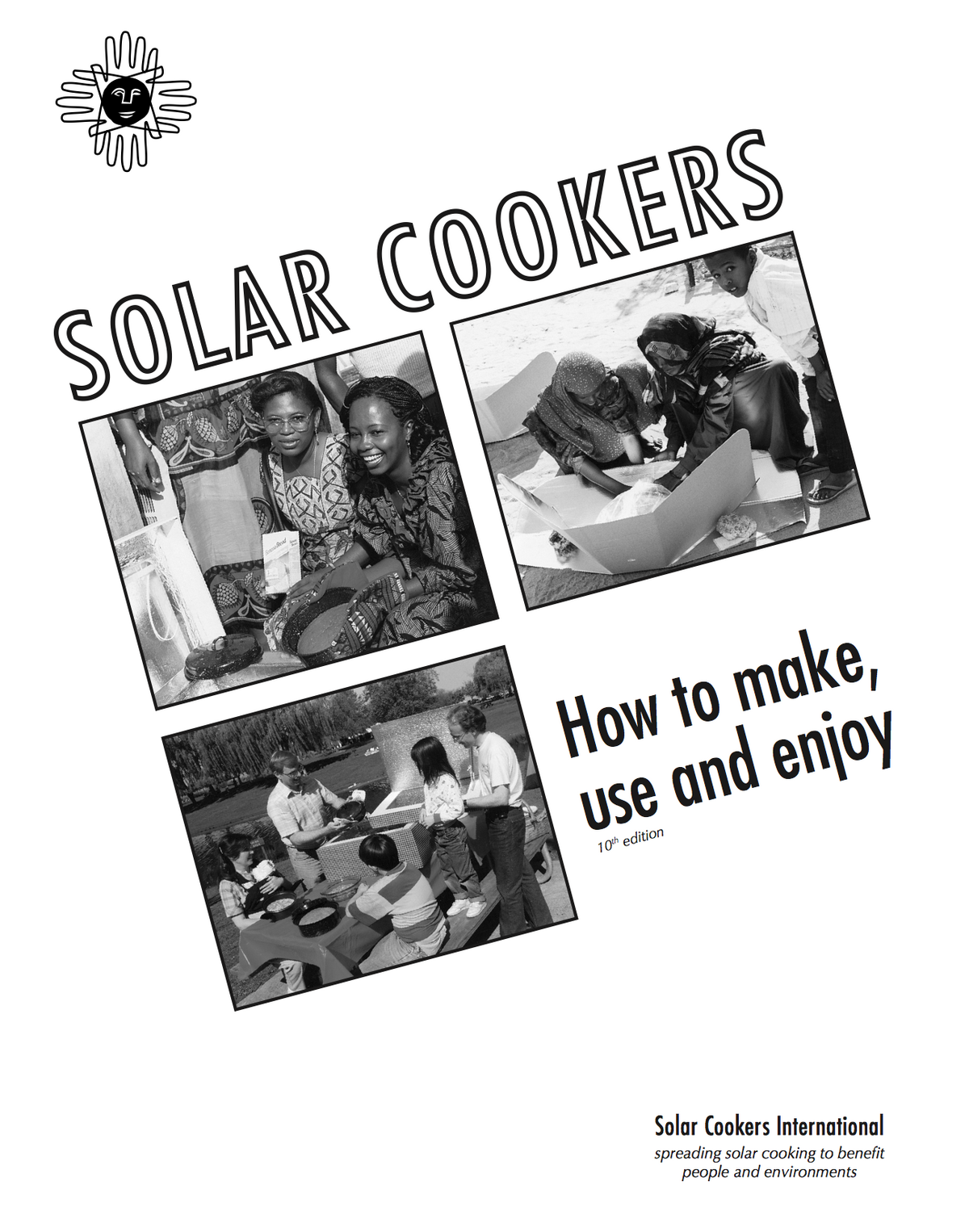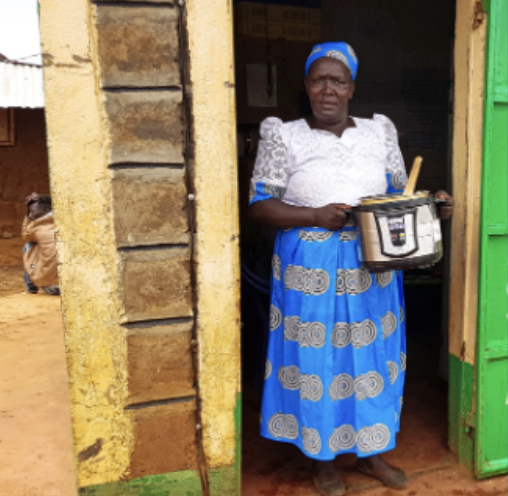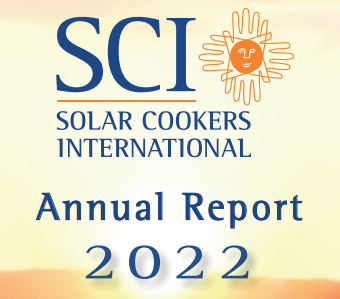MAKING ICE IN A SOLAR COOKER:
How to Use the Solar Funnel as a Refrigerator/Cooler
A university student (Jamie Winterton) and I were the first to demonstrate that the BYU Solar Funnel Cooker can be used - at night - as a refrigerator. Here is how this is done.
The Solar Funnel Cooker is set-up just as you would during sun-light hours, with two exceptions:
1. The funnel is directed at the dark night sky. It should not "see" any buildings or even trees. (The thermal radiation from walls, trees, or even clouds will diminish the cooling effect.).
2. It helps to place 2 (two) bags around the jar instead of just one, with air spaces between the bags and between the inner bag and the jar. HDPE and ordinary polyethylene bags work well, since polyethylene is nearly transparent to infrared radiation, allowing it to escape into the "heat sink" of the dark sky.
During the day, the sun's rays are reflected onto the cooking vessel which becomes hot quickly. At night, heat from the vessel is radiated outward, towards empty space, which is very cold indeed (a "heat sink").
As a result, the cooking vessel now becomes a small refrigerator. We routinely achieve cooling of about 20? F (10? C) below ambient air temperature using this remarkably simple scheme.
In September 1999, we placed two funnels out in the evening, with double-bagged jars inside. One jar was on a block of wood and the other was suspended in the funnel using fishing line. The temperature that evening (in Provo, Utah) was 78? F. Using a Radio Shack indoor/outdoor thermometer, a BYU student (Colter Paulson) measured the temperature inside the funnel and outside in the open air. He found that the temperature of the air inside the funnel dropped quickly by about 15 degrees, as its heat was radiated upwards in the clear sky. That night, the minimum outdoor air temperature measured was 47.5 degrees - but the water in both jars had ICE. I invite others to try this, and please let me know if you get ice at 55 or even 60 degrees outside air temperature (minimum at night). A black PVC container may work even better than a black-painted jar, since PVC is a good infrared radiator - these matters are still being studied.
I would like to see the "Funnel Refrigerator" tried in desert climates, especially where freezing temperatures are rarely reached. It should be possible in this way to cheaply make ice for Hutus in Rwanda and for aborigines in Australia, without using any electricity or other modern "tricks." We are in effect bringing some of the cold of space to a little corner on earth. Please let me know how this works for you.
------------------------------------------------------------------------
Looks interesting. I think I'll try it once summer arrives.
Now, all I have to do is set water outside in ice cube trays to make ice.
Another thought. Just how many dozen solar cookers would one need to make enough ice to fill 6 big coolers or an old fashioned ice box?

This info might be of help to those who must refrigerate medications.
How to Use the Solar Funnel as a Refrigerator/Cooler
A university student (Jamie Winterton) and I were the first to demonstrate that the BYU Solar Funnel Cooker can be used - at night - as a refrigerator. Here is how this is done.
The Solar Funnel Cooker is set-up just as you would during sun-light hours, with two exceptions:
1. The funnel is directed at the dark night sky. It should not "see" any buildings or even trees. (The thermal radiation from walls, trees, or even clouds will diminish the cooling effect.).
2. It helps to place 2 (two) bags around the jar instead of just one, with air spaces between the bags and between the inner bag and the jar. HDPE and ordinary polyethylene bags work well, since polyethylene is nearly transparent to infrared radiation, allowing it to escape into the "heat sink" of the dark sky.
During the day, the sun's rays are reflected onto the cooking vessel which becomes hot quickly. At night, heat from the vessel is radiated outward, towards empty space, which is very cold indeed (a "heat sink").
As a result, the cooking vessel now becomes a small refrigerator. We routinely achieve cooling of about 20? F (10? C) below ambient air temperature using this remarkably simple scheme.
In September 1999, we placed two funnels out in the evening, with double-bagged jars inside. One jar was on a block of wood and the other was suspended in the funnel using fishing line. The temperature that evening (in Provo, Utah) was 78? F. Using a Radio Shack indoor/outdoor thermometer, a BYU student (Colter Paulson) measured the temperature inside the funnel and outside in the open air. He found that the temperature of the air inside the funnel dropped quickly by about 15 degrees, as its heat was radiated upwards in the clear sky. That night, the minimum outdoor air temperature measured was 47.5 degrees - but the water in both jars had ICE. I invite others to try this, and please let me know if you get ice at 55 or even 60 degrees outside air temperature (minimum at night). A black PVC container may work even better than a black-painted jar, since PVC is a good infrared radiator - these matters are still being studied.
I would like to see the "Funnel Refrigerator" tried in desert climates, especially where freezing temperatures are rarely reached. It should be possible in this way to cheaply make ice for Hutus in Rwanda and for aborigines in Australia, without using any electricity or other modern "tricks." We are in effect bringing some of the cold of space to a little corner on earth. Please let me know how this works for you.
------------------------------------------------------------------------
Looks interesting. I think I'll try it once summer arrives.
Now, all I have to do is set water outside in ice cube trays to make ice.
Another thought. Just how many dozen solar cookers would one need to make enough ice to fill 6 big coolers or an old fashioned ice box?
This info might be of help to those who must refrigerate medications.




Comment